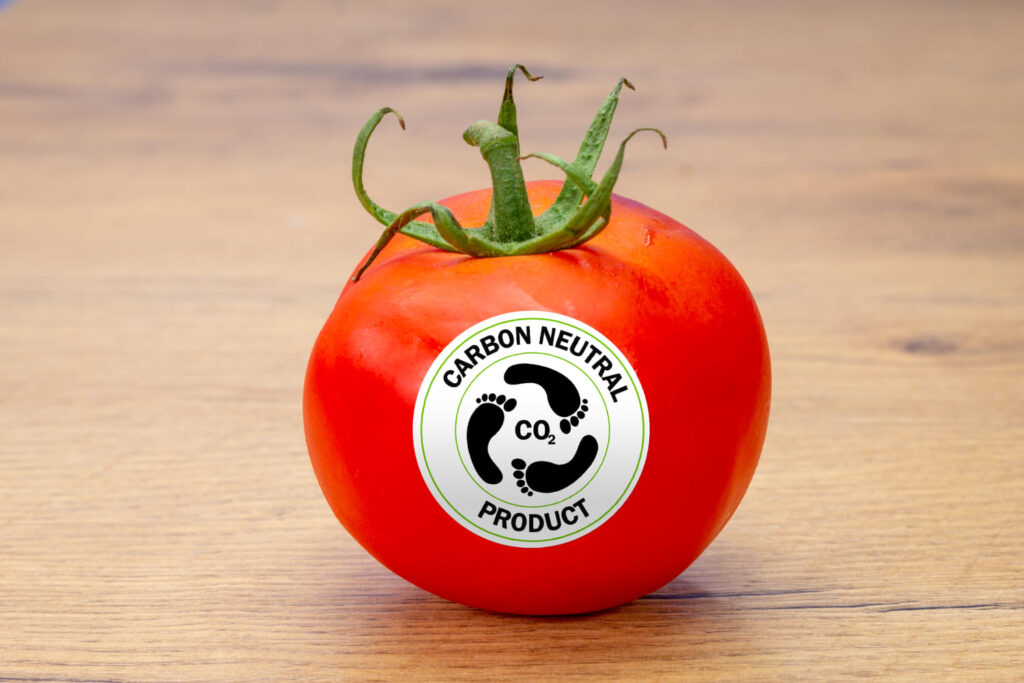
According to the European Court of Auditors, 26% of global greenhouse gas emissions comes from food production, with the agricultural sector responsible for 10.3% of the greenhouse gas emissions in the EU. In order to make responsible and sustainable consumption choices, it is a good idea to consider the carbon footprint of food products.
This indicator reveals that the environmental impact of food in terms of greenhouse gas emissions, taking into consideration the entire food supply chain. Let’s analyze what the carbon footprint of food is, how it is calculated and which foods have a greater impact on the environment and the planet.
What is the carbon footprint of food?
Each food has a certain impact on the environment due to the natural resources consumed to produce it and get it to the end consumers. To reduce pollution and the overuse of resources, we can pay attention to some indicators. Above all, there is the carbon footprint, that calculates a product’s greenhouse gas emissions, measured in carbon dioxide equivalents (CO2e). This unit of measurement is used to express greenhouse gas emissions in terms of CO2 equivalents, considering that each greenhouse gas has a different impact on the Earth’s climate (e.g. methane, nitrous oxide).
Basically the carbon footprint indicates the amount of greenhouse gas emissions – expressed as CO2 equivalents – released by a product, process, person, city, company or country. The carbon footprint of a food product measures its total greenhouse gas emissions, taking into account its entire life cycle (Life Cycle Assessment or LCA): production, packaging, storage, transport, sale, consumption and disposal.
Obviously, there are other indicators to help measure the sustainability of foods. For example, it is important to know what the ecological footprint is in the food sector which is the total amount of natural resources used in a food’s life cycle. Unlike the carbon footprint, the ecological footprint not only calculates greenhouse gas emissions but also the overall environmental impact of a food product, taking into account both the resources needed to produce it and the Earth’s capacity to regenerate those resources and dispose the waste generated.
Another sustainability indicator that can be used is the water footprint, which is the amount of fresh water used to produce a food. It examines all the different types of water used in the production process (e.g. drinking water, groundwater, rainwater).
The organization and point of reference for the carbon footprint of food across the world is the Global Footprint Network, an international non-profit organization founded in 2003, offering tools, metrics and standardized guidelines that are easy to access.
How to calculate the carbon footprint of a food product
In order to calculate the carbon footprint of food products, you need a database of information and specific metrics, based on trustworthy data that mathematical formulas can be applied to. In this way, it is possible to obtain the most accurate result possible and correctly calculate the estimated greenhouse gas emissions of a food product, taking into account the its entire life cycle.
These values are combined together by scientists and researchers, but there is still no standardized process on a global, European or even national level for calculating the carbon footprint. The majority of companies rely on organizations like the Global Footprint Network, which offers easy-to-use tools that enable them to calculate their own carbon footprint and their products’s.
Which foods have a bigger ecological footprint?
To find out which is the most eco-friendly food and which involve higher greenhouse gas emissions, let’s consider a recent study carried out by the Financial Times based on CarbonCloud data.
Analyses showed that the food that generates the highest amount of greenhouse gas emissions is beef, with 21kg of CO2 equivalents for each kg of product (kg CO2eq/kg); but frozen shrimp also have a considerable environmental impact with 19.9kg CO2eq/kg.
Diary product have an average carbon footprint of 14.2kg CO2eq/kg, while mozzarella’s is 8.7kg CO2eq/kg. Some of the most sustainable foods are obviously vegetables.
Products with a lower carbon footprint are tomatoes (1.8kg CO2eq/kg), carrots (0.4kg CO2eq/kg) and apples (0.3kg CO2eq/kg). This clearly shows the environmental consequences of our food choices: reducing our consumption of animal-derived products choosing vegetables that has a less demaging effect on the planet.
When it comes to food production, according to the European Court of Auditors, 53% of greenhouse gas emissions comes from animals, 29% from crops and 18% from the supply chain. Interestingly, only 5% of greenhouse gas emissions is caused by packaging, compared to 6% by transport, 8% by the use of soil for the human diet and 31% by farming and fishing. In any case, it is possible to reduce the carbon footprint of food by changing packaging and choosing eco-friendly alternatives like eco-friendly packaging.
Volmar offers high-quality food packaging solutions, including packaging with a low environmental impact, to reduce the carbon and ecological footprints. Our eco-friendly food packaging are compliant to the European regulations and is ideal for companies that want to reduce their CO2 emissions. Options include packaging made of thermoformed paper, high-barrier PLA, Mater Bi and high-barrier polyester (Mono APET).

